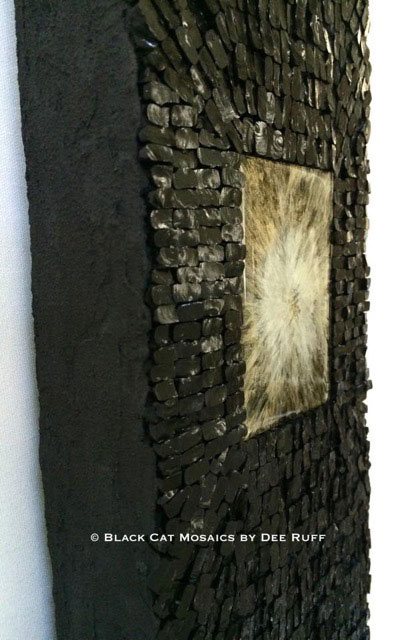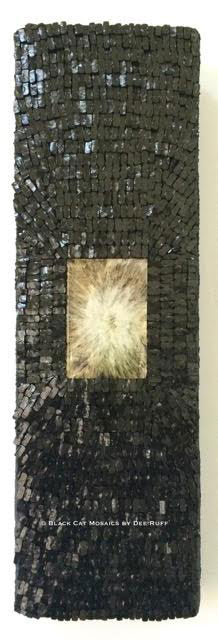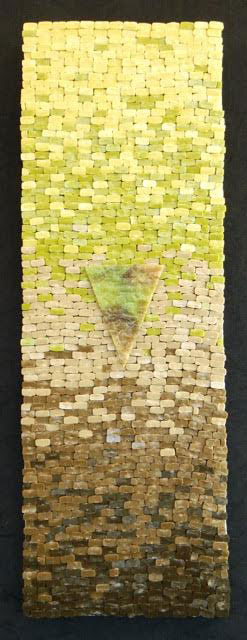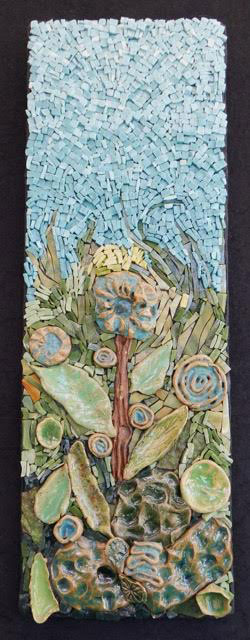Mosaic artwork can include rough textural elements that would be impractical in architectural tiling such as a shower wall, which needs to be smooth for cleaning and safety. Note that smooth does not mean flat. You can have textural elements in an architectural surface, but they need to be rounded and not jagged. (Cheese-grater walls in the shower or even your hallway would be problematic.)
Serendipity
For the past few months or more, I have been meaning to create a mosaic which uses cut pieces of tile mounted on their side so that I could demonstrate how a “hand-cut” smalti look and feel could be created with ordinary molded mosaic tile, which is significantly cheaper than smalti. But work and other art projects kept getting in the way, until finally one day out of the blue artist Dee Ruff emails me some pictures of her work, and they illustrate exactly what I had in mind!


Mixed Media and Texture

Dee’s “In the Garden” mosaic really caught my eye because I have always been drawn to mixed-media mosaics and mosaics where the work lines of the background interact with figurative elements in the foreground. This mosaic has both. Plus as a subtle color wash gradient in the background. Plus a hand-cleaved texture made from molded recycled glass tile that was cut and mounted on edge. (It was almost as if this mosaic were made to order for me. Imagine my surprise when Dee emailed it to me.)
Dee says “in the Garden” is one of her favorite pieces. Note that the flowers are made from ceramic figures by Atlanta-based artist Martha Coursey, who does amazing work. I like how the smooth glazed ceramic pieces contrast with the rough cleaved texture of the sky.
Backers, Substrates, and Mounting
Dee makes her panels from recycled expanded polystyrene (Styrofoam) covered in alkali-resistant fiberglass mesh and multiple coats of thinset mortar colored with concrete dye. The “hollow” core makes the substrates lightweight, and the skin of thinset and mesh makes them strong and tough (impact resistant). Dee says that she builds the mounting hardware directly into the skin so that it is anchored by layers of thinset reinforced by fiberglass mesh.
Dee uses the Wedi brand of hardware, but brass picture hanging rings sold by building material stores should work, provided you use the heavier gauges. Note that no mounting hardware will be strong enough if you hang them on a nail in drywall, which is weak and fails easily. Nails or screws for mosaics and paintings of any size should go through the drywall and into the stud inside the wall (use a stud finder) or in the crown molding at the top of the wall with a hooked rod hanging down.
Note the safest and most robust mounting system is probably the French cleat. See Natalija’s Instructions for French Cleat Mounting.
More Of Dee Ruff’s Art
Dee Ruff currently has work available at the The Mosaic Love Gallery in Jonesborough, Tennessee. Dee’s website is Black Cat Mosaics, and she has some interesting multimedia mosaics and collaborations online there.


Leave a Reply